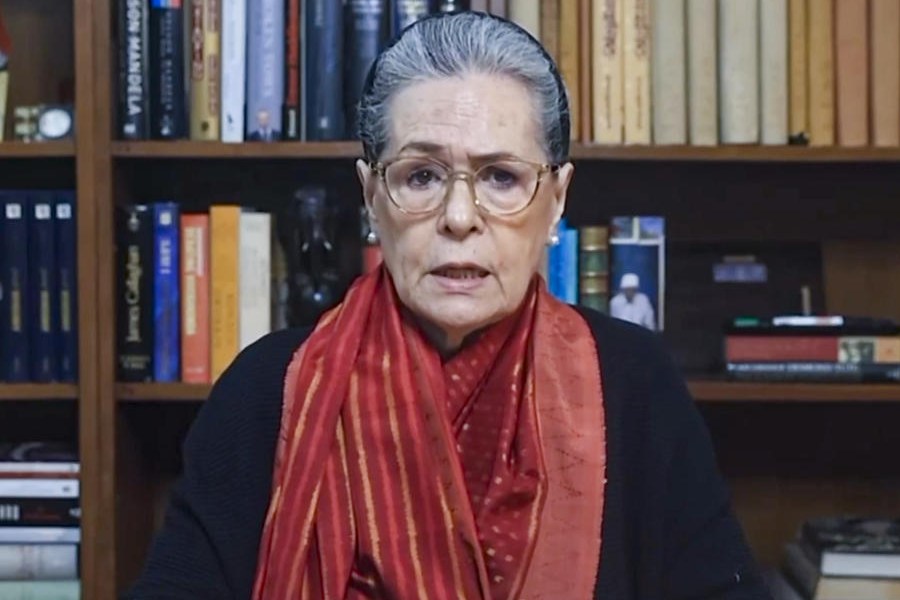Producing food is terrible for the environment. According to the online scientific publication Our World in Data, agriculture is responsible for a quarter of the carbon emissions in the atmosphere and the vast majority of world's biodiversity losses.
And while environmental decline goes on, the world's population keeps growing. The UN predicts the world population will reach 10 billion in 2057. This raises the question: how do we increase food production by 50% while mitigating the catastrophes of biodiversity loss and the climate crisis?
"We've come to understand that using more land for agriculture is the biggest sin with respect to climate change and biodiversity. This means we need to produce food on less land so we can protect nature," said Matin Qaim, a specialist in food economics and director of the Center for Development Research at the University of Bonn in Germany.
How do we feed 10 billion people?
Qaim explained that, broadly speaking, there are two different approaches for how to do this.
"One strand says we need dietary changes to make consumption more sustainable. That means less waste, less meat. The other strand argues we need better technologies to create more environmentally friendly methods of agriculture," he told DW.
Qaim thinks both approaches are necessary. For one, we need to change the way food is produced — in particular, reducing human consumption of proteins and nutrients from animal sources. But it's not enough. Like many experts, he thinks gene technologies are a crucial part of the strategy for a sustainable food system.
"Everyone wants to produce more food from less area and with less chemical pesticides, and with less fertilizer. If you're able to [use gene technologies to] develop plants that are more tolerant and more resistant, it's a good thing," said Qaim.
What really is GM food?
Genetically modified organisms (GMOs) are organisms that have altered DNA to change their properties. Genetically modified crops can improve yield, build resistances to pests, frost or drought, or add nutrients. Crops can also be modified to reduce carbon emissions and boost the sustainability of food production. While widespread, GM crop production uses only about 10% of the land non-GM crop production uses.
"GM is nothing more than a breeding technique, much like crossing that we've been doing for thousands of years. But it's more sophisticated, so we can make very precise changes, very rapidly," said David Spencer, a phytopathologist and spokesperson for Replanet, an alliance of NGOs advocating for science-based solutions to climate change and the loos of biodiversity. It's campaign Reboot Foodfocuses on sustainable food production.
GMOs were first introduced in the US in 1994, with modified tomato plants that ripened more slowly to prolong their shelf life. Since then, a wide range of crops, such as soybeans, wheat and rice have been approved for agricultural use, along with GM bacteria grown to produce large amounts of protein.
Scientists in India have also developed strains of Sub-1 rice, which are much more resistant to flooding. Flooding is a major issue in rice-growing regions of northern India and Bangladesh, set to become worse as the climate crises develops, and now 6 million farmers in the region are using Sub-1 rice to safeguard their crops against inundation.
Golden rice, on the other hand, is a GM strain modified to contain vitamin A, designed to combat the shortage of dietary vitamin A in parts of Asia and Africa.
GM disease resistance
Gene editing technology has also helped save crop production from blights. In the late 20th century, the papaya ringspot virus almost wiped-out papaya crops in Hawaii, but a local scientist developed a modified papaya that was resistant to the virus. Seeds were distributed to farmers, saving papaya production a decade later.
David Spencer has also worked on protecting soybeans from fungal diseases spreading through America.
"Currently there's no real solution except for massive fungicide applications. No one wants that, so we worked on adding genes or DNA changes from distantly related plants to achieve better resistances to the fungus," Spencer told DW.
GM controversy
And yet, many people find the idea of GM foods hard to swallow — a 2020 opinion poll found 50% of people in 20 surveyed countries perceived GM foods as unsafe.
When GM crops were first developed 30 years ago, uncertainty and concerns about safety were shared by scientists, but things are different now.
James Rhodes, a biosafety analyst at Biosafety South Africa, explained that 30 years of safety data and scientific insight show GM foods are as safe as non-GM foods.
"We have 30 years of safety information showing that GM food is completely safe to eat, and 30 years of information showing it's not dangerous for the environment," said Rhodes.
According to Rhodes, it's not possible in any country to start using GMOs without going through extensive regulatory requirements.
"By the time it's taken to the field and commercial approval, it's gone through a long history of development, especially looking at the risks," he said.
Monsanto ruined GM food's reputation
Matin Qaim thinks the controversy around GMOs has been muddled up with a debate about corporate industrial agriculture. The specter of Monsanto still hangs over the industry.
"There are concerns big corporate interests from companies like Monsanto, which promote more pesticides and monocultures and wrong forms of agriculture and seeds sold to farmers and expensive prices," said Qaim.
Qaim shares the concerns but argues the problems have more to do with how technology is regulated than gene editing itself.
"It's the wrong model to have corporate industrial agriculture dominated by a few. But this has nothing to do with gene technology. Banning GMOs would be like banning the internet because of the sale of bad drugs and pornography," he said.
GM food industry is changing
GM agriculture is moving on from the Monsanto big-dog corporate model. GM products are increasingly focused on social and public enterprise and the industry is looking at more local solutions that help smallholder farmers in developing countries.
Regulation and licensing are a huge part of this. Many, including Replanet, strongly advocate for open-source seeds and GM technologies.
"You can develop GMOs without patents developed by humanitarian public organizations. We need to regulate in a smart way and ensure there's competition in the market. Corporate industrial agriculture is the wrong model," said Qaim.
Ultimately, it's about creating a licensing landscape that empowers local farmers to adapt to the demands of sustainable agriculture, but quickly enough to meet rising populations and climate change.
But as Rhodes said, new GM technologies will be more accepted as their need becomes greater, like with the case of the papaya virus.











